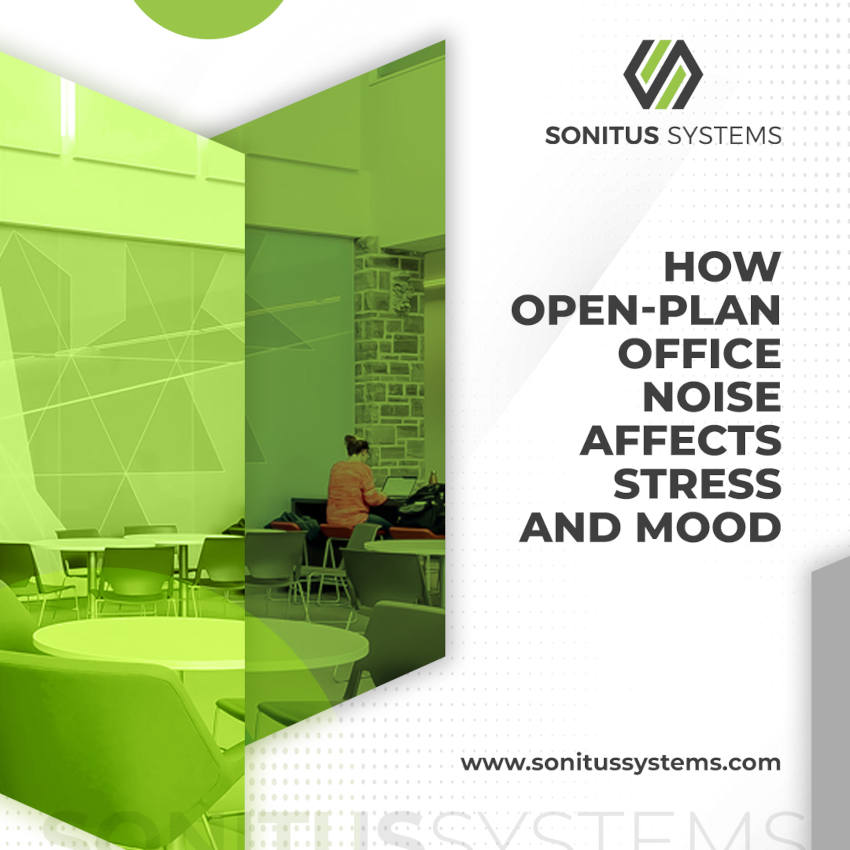A new study looking at the average noise levels in offices has found that open-plan offices may be a significant contributor to employee stress levels.
A new study looking at the average noise levels in offices has found that open-plan offices may be a significant contributor to employee stress levels.
Considering 70 percent of office workers find themselves in such an environment (Ireland has a high number of open workspaces per capita), the issue is particularly troublesome.
While the open-plan workplace brought with it promises of collaboration and creativity, the reality seems quite different. With many people having now experienced working from home for the
duration of the pandemic, questions are arising over what is truly best for people’s wellbeing and for the productivity of companies.
Is it time to rethink the open-plan work environment?
The Study
As recently reported by The Conversation, the aforementioned study was led by Libby Sander of Bond University and involved placing subjects in controlled conditions where their bodily responses
could be monitored. In these experiments, the team of researchers paid particular attention to the subject’s heart rate and electrodermal response when exposed to office noise. In addition, they
used AI facial recognition software to determine the kind of emotion subjects were experiencing when subjected to a stressor.
The conclusion is definite: noisy open-plan office environments are causally linked to physiological stress. Anecdotally, office workers globally confirm this, with some research showing
that out of 1,000 U.S. employees surveyed, 76 percent of them said they actively dislike open-plan offices, citing noise and lack of privacy as their major bugbears.
Specifically, the study found that office noise leads to a 25 percent increase in negative feelings and a worsening of mood. Notably, these results were found after
just eight minutes of participants being subjected to the simulated open-office environment. Libby Sander expects the effects to be higher in a real environment where people are subjected to
office noise for prolonged periods.
Experimental Methodology
The study involved the construction of an artificial office environment with participants subjected to soundscapes that accurately simulated both a noisy, open-plan office and a quieter,
private space. Physiological and psychological measurements were taken and compared to build a picture of a participant’s wellbeing and working performance.
While immersed in the different soundscapes, the participants were tasked with a proofreading challenge. In the noisy open-office soundscape, the sounds were shuffled to avoid the participant building
a tolerance to the audible patterns of talking, footsteps, printers, telephones ringing, and keyboard typing.
This ‘repeated measures experimental design’ also allowed the researchers to identify any particular noises as key stressors. The identification of such stress was achieved through body sensors that
tracked heart-rate changes and changes in the participants’ sweat. Sanders points out that these are well-established indicators of stress. In addition to the facial AI software, the researchers also
had participants self identify and report their emotional responses.
While the increase in negative mood was detected, there was also a 34 percent increase in sweat response. Sanders argues that despite productivity not suffering in their study, she
would expect to see a more pronounced effect over a long enough period.
Long-Term Effects of Chronic Noise
Studies in the past, Sanders notes, have simply relied on office workers reporting the effects of noisy open-plan environments. By carefully monitoring responses while simulating the environment,
this study allows a better understanding of the causal relationship between noise and physiological stress.
In taking tighter control over the soundscape and environment, the study allowed the researchers to precisely identify which work environment stressors are most harmful. There is already
a well-documented causal relationship between chronically elevated noise levels and a person’s wellbeing, but with this study, the question remains, what are the long-term effects.
Sanders believes that long-term exposure to such noise levels can only have a negative effect. Not just for employees but also for a business. With stressed workers comes less productivity,
decreased job satisfaction, lower levels of commitment, and, she believes, a higher turnover of employees.
Solutions
Covid-19 changed our work habits dramatically, with Ireland seeing one of the highest rates of remote working in Europe. The debate is ongoing, but there is a large cohort of office workers
who are resisting a return to the office environment, if the flexibility to work from home is not granted. The stress caused by noisy open-plan offices is considered one of the major factors involved.
Therefore, it is vital for owners and operators of office spaces to accept the evidence and accommodate employee needs, ensuring the workplace is conducive to team wellbeing.
Aside from there being no need to commute, office workers enjoy the privacy and quietude that can be experienced working from home. This can be implemented into an office space by using
sound-masking technologies, ambient noises, and simple wall-partitions.
Though this may seem a step-backward for some offices, the science indicates it is more conducive to well-being and, therefore, productivity.
Sonitus Systems offers both the hardware and software for a range of environmental parameters on a continual basis, with real-time information available through our
Sonitus Cloud dashboard. For more details on our indoor and outdoor noise and air quality monitoring products and services, please contact the team at www.sonitussystems.com/contact/contact.html
